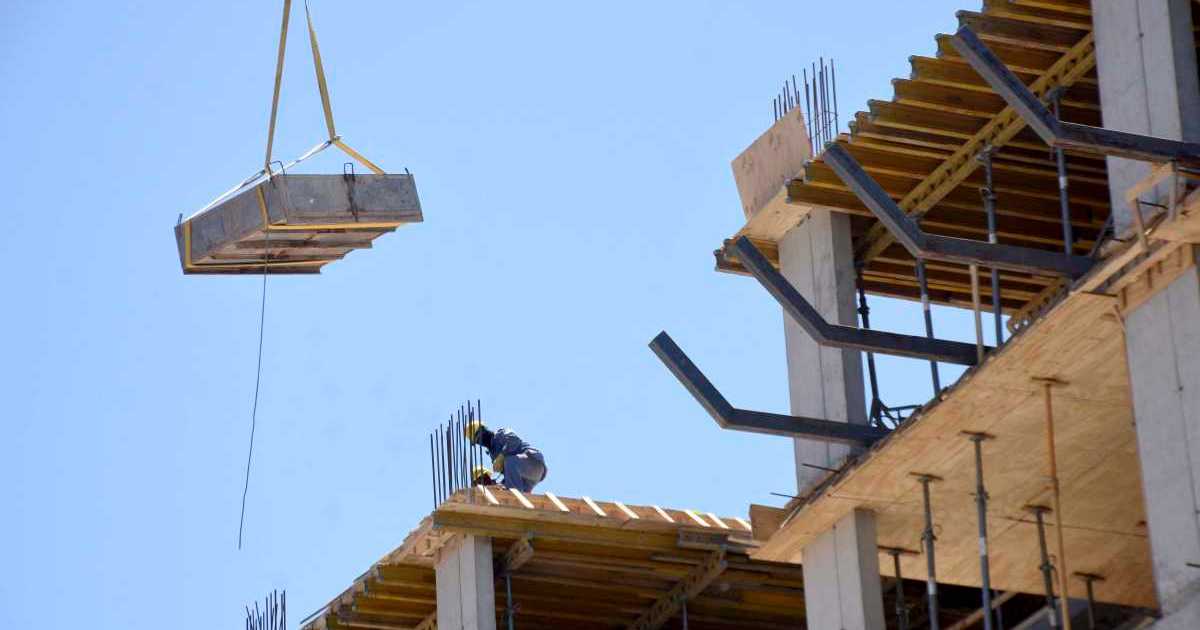With a recession installed, different data begin to show a sharp drop in private investment levels.
With almost no public works, investment ended the first two months with a drop of 13,3% compared to the same period in 2023.
Why private investment fell in the first two months
It is explained by the shrinkage in construction and durable equipment, while the purchase of imported machinery recovered due to greater exchange stability.
Anyway, The indicators for the beginning of 2024 are higher than those registered last Decemberwhen the government transition and devaluation took place.
This is clear from the latest Monthly Gross Domestic Investment report carried out by the consulting firm Orlando J. Ferreres (IBIM-OJF), an indicator that estimated an investment of USD 5,587 million for February, a contraction of 12.2% year-on-year and a seasonally adjusted increase of 1.1% compared to January.
The study stated that investment in machinery and equipment registered a drop of 4.7% for the second month of the year, accumulating for the first two months of the year a drop of 8,2%.
Imported equipment registered a new advance, while those of national origin fell 15.5%.
Construction, with a strong negative impact
For its part, Investment in the construction sector registered an annual contraction of 17.7% for Februarycontinuing with the acceleration of the decline rates that the sector has been showing in recent months, accumulating a decrease of 17.3 percent for the first two months.
Construction activity measured by Indec registered a drop of 21.7% in January compared to the same period in 2023. The seasonally adjusted series marked a variation of 10.2% compared to the previous month.
In this retraction scenario, Industrial production fell 5.6% during the first two months if compared to the same period last year and it was 15% below the last peak, in May 2022, according to the survey carried out monthly by the Latin American Economic Research Foundation (Fiel).
Ferreres pointed out that investment “continues to register negative rates in the annual comparison, accumulating a contraction of 13.3% for the first two months of the year, although it remains at higher levels than last December.”
By sector, construction and durable equipment show an acceleration in their decline, while the purchase of imported machinery shows a recovery, perhaps related to exchange stability.”
The negative scenario is not expected to change
Furthermore, the consultant does not expect a rapid reversal of the current panoramaalthough he highlighted some incentives.
“In the coming months it will be difficult to see a significant improvement, due to the recession and the stocks. In any case, if the reduction in the interest rate is sustained, we could see some improvement in investment levels from greater access to credit, especially if in the coming months the government manages to reduce inflation significantly, begin to dismantle the exchange controls and show greater economic stability in general,” they projected.
In January 2024, the Monthly Economic Activity Estimator (EMAE) recorded a 4.3% drop in the year-on-year comparison.
They are already accumulating three consecutive months with declining resultsafter the fall in November (-0.9%) and December (-4.5%).
In relation to the same month of 2023, only five sectors of activity that make up the EMAE registered increases in Januaryamong which agriculture, livestock, hunting and forestry (+11.1% yoy) and mining and quarrying (5.2% yoy) stand out.
In the first case, the comparison is made against a particularly negative year, due to the impact of drought on local production, especially oilseeds.
Regarding mining, there is a sustained rebound in oil production, with Vaca Muerta, and lithium, with production in the north of the country.
Teaching (1.9%), social and health services (2.2%) and public administration (1%) also grew.
